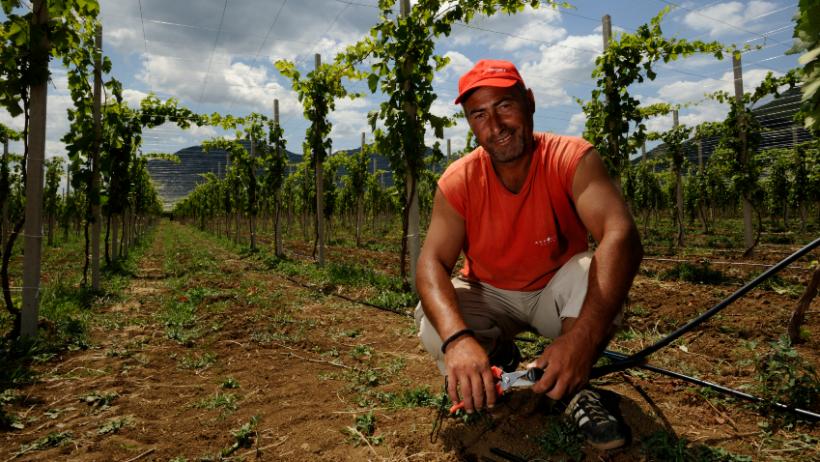Rural Resilience: It's Not Only About Insurance

During a recent training session about The Role of Financial Market Solutions for Building Resilience to Shocks in Agriculture, we asked a simple question to a group of policy makers and private sector players: “Which financial services do you think play a role in boosting rural resilience?” To our surprise, while participants were given the possibility to select several answers, many of them chose only one: insurance.
With several years of combined experience on the development of agricultural insurance programs, we fully agree that insurance is important in helping farmers manage the impact of economic shocks. But it should be used as the last line of defense, for financial protection against specific high-severity, low-frequency events, as part of a risk-layering approach.
Given the variety of risks impacting rural households — and the need for farmers to find ways to not only manage financial shocks but also avoid them—a broad range of financial services such as credit, savings, and remittances are of crucial importance.
Rural resilience is about both financial protection and risk reduction. In addition to accessing liquidity after shocks (financial protection), farmers need instruments to reduce their vulnerability to agricultural risks (risk reduction). Helping farmers invest in irrigation equipment or drought-resistant seeds, for example, will allow them to continue growing their crops and generating income when droughts happen.

Table 1: The role of financial services for risk reduction and financial protection
Here are a few examples of how financial services matter for farmers and can, in fact, have multiple positive impacts:
Credit
- Farmers can use credit to invest in irrigation equipment, greenhouses, or to buy drought-resistant seeds. Drip irrigation, for instance, allows farmers to irrigate their crops and reduce their vulnerability to drought.
- After shocks happen, access to emergency credit greatly reduces the need for poor families to reduce their consumption and/or engage in distress sales of productive assets.
- Microfinance institution BRAC, in Bangladesh, offers emergency loans to support families to cope during emergencies and resume economic activities and build resilience.
Savings
- Farmers can use commitment savings to save for climate-smart investments.
- In Mali and Senegal, social enterprise myAgro has developed a mobile layaway program that enables smallholder farmers to save little by little for agricultural inputs such as seed, fertilizers, and tools to improve their productivity by using a prepaid scratch card model. myAgro indicates that its model increases net income by $150 – $300 per farmer.
- In Malawi, farmers who had their earnings deposited into a savings account had higher savings before the next planting season, spent more on agricultural equipment, and increased crop sales. If farmers are informed about the benefits of climate-smart investments that reduce their vulnerability to shocks, they may use savings toward these investment goals.
- In Côte d’Ivoire, cashew nut workers that were opened direct-deposit commitment savings accounts increased their labor productivity and earnings by 18 percent. When their money is protected from theft, pressure to redistribute income, and the temptation to spend, farmers have more incentives and capacity to invest.
- Farmers can also save for financial protection, by building precautionary savings that they can use in case of emergency:
- In Kenya, research supported by the World Bank for social enterprise Digifarm showed that female farmers experience on average 2.5 times as many emergencies as Kenyans overall, earning less money with more volatility and struggling with more expenses. However, they manage to save, informally, at the same rate as Kenyans in general. Based on these insights, Digifarm is currently developing a formal savings product that would allow female farmers to cater for emergencies
Remittances, both international and domestic
In 2018, $529 billion of international remittances went to developing countries. This is over three times the amount of official development assistance.
- About 75 per cent of international remittances are used by receiving households to put food on the table, cover medical expenses, school fees, housing expenses, cover loss of crops, or family emergencies. They account for up to 60 per cent of a household’s total income and represent a lifeline for millions of rural families.
- About 25 per cent of international remittances are saved or invested in asset building, which may be investments in risk reduction.
- Looking at the national level, research in Kenya shows that mobile money contributed to the financial protection of rural households. When hit with an agricultural shock, Kenyan households with no mobile money access suffered a 7 percent drop in consumption, while those who did have mobile money were able to maintain their consumption levels because they could quickly receive funds from a network of relatives.
Farmers have long suffered from product-centric policies. It is crucial that governments and donors support financial services providers in a holistic manner so that farmers can access a variety of financial services that they can use and combine depending on their situation and aspirations. This is the principle that has guided the recent creation of the Financial Resilience Program, a partnership between the World Bank and USAID to support governments in developing policy to protect rural households and businesses against climate shocks and disasters.
Photo Credit: Almin Zrno
This blog was originally published in the World Bank Group’s All About Finance blog.
Financial Resilience Around the World | Blog Series
- Financial Resilience Around the World: Global Risk Financing Facility
- Three Ways Lesotho's Past Experience with Disasters Strengthen COVID-19 Response
- Three Steps to Help Albania Withstand the Financial Impacts of Disasters and Crises
- How the Pandemic Has Highlighted the Need for the Next Generation of Natural Catastrophe Impact Modeling
- How Burkina Faso is Leveraging a Credit Guarantee Scheme to Help SMEs Weather the COVID-19 Economic Crisis
- Using Satellite Data for Climate, Crisis and Disaster Risk Finance
- Learning from COVID-19 and Climate Change: Managing the Financial Risks of Compound Shocks
- Developing Disaster Risk Finance in Morocco: Leveraging Private Markets for Sovereign Risk Transfer